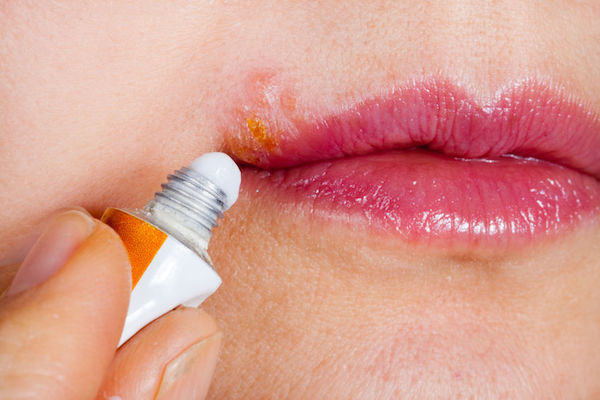Fever blisters – or cold sores – are painful sores or blister-like lesions that may appear on the lips, chin, cheeks, and inside the nostrils and mouth.

A fever blister is caused by the herpes simplex virus type 1 (HSV-1), which is highly contagious. The virus is typically spread by saliva (sharing a cup or kissing) or by skin contact, and can remain dormant (inactive) in the body until it is triggered.
Outbreaks of fever blisters may occur once and never again, or a person may suffer from them two to three times a year (sometimes even more). Triggers vary from person to person and can include exposure to the sun, stress, having a fever and menstruation.
What are its symptoms?
Fever blisters develop through a number of stages, beginning with symptoms of tingling or burning on the site, which may be accompanied by swelling and tenderness. These stages include:
- A blister or cluster of blisters develops, usually filled with fluid
- The blister bursts
- The sore then crusts over forming a scab.
Typically, fever blisters can take from one to two weeks to heal.
How is it diagnosed?
Usually, cold sores are easily recognisable, particularly if you are prone to getting them. But if you are concerned that the blister(s) has not healed, or if your baby or child is affected, consult your doctor. A general practitioner will be able to make a diagnosis from the appearance of the sores.
Sometimes a blood test may be done, but this is usually only ordered for patients who have a weakened immune system, such as those undergoing chemotherapy or those who have been diagnosed with HIV/AIDS.
What are your treatment options?
Fever blisters generally clear up on their own within one to two weeks, but there are options to shorten their duration and alleviate the pain.
Treatment of fever blisters includes:
- Over-the-counter antiviral creams containing acyclovir or penciclovir. These should be applied as soon as symptoms appear, that is, the telltale tingling sensation that indicates a cold sore is starting. These creams should be applied five times a day for four to five days. Consult your Clicks pharmacist if you need advice.
- For people whose immune systems are weakened, there is a possibility of complications, including the infection spreading to other parts of the body, including the eye and brain. These patients will be prescribed antiviral tablets, and may be referred to a specialist, but this would depend on what illness they have as well as its severity.
- Painkillers may also be prescribed as clusters of blisters tend to be very painful. Always consult with your doctor if you wish to give your child a painkiller.
- During pregnancy, it’s advised to discuss treatment options with your doctor.
Can it be prevented?
Once you have the virus, there is no treatment to get rid of it, but there are ways to prevent flare-ups. These include:
- Avoiding known triggers, for example, sun exposure, or excessive alcohol intake.
- Follow a healthy lifestyle, including exercising, getting enough sleep, avoiding stress and eating a balanced, varied diet.
- Wear sun protection on your lips and use a moisturising balm regularly.
- Don’t touch your cold sores, and wash your hands often.
IMAGE CREDIT: 123rf.com
